Answered: Top 10 Questions When Buying an Engagement Ring
When buying an engagement ring, there are several common questions that people tend to ask to ensure they make the right choice and create a memorable proposal.
It's very difficult to navigate through all of them so here is some help from us to try and make things a little easier. Here are our Top 10 Questions When Buying an Engagement Ring - Answered!
1. What Should My Budget Be?
The budget for buying an engagement ring can vary significantly depending on individual circumstances and preferences. Traditionally, a common guideline was to spend about two months' salary on an engagement ring. However, this "rule" is considered outdated by many and is more of a marketing strategy than a hard and fast rule.
When setting a budget for an engagement ring, consider the following factors:
- Financial Situation: Assess your current financial status, including your savings, debts, and income. It's important to buy a ring that you can afford without going into debt.
- Partner's Expectations: Understand your partner's preferences and expectations. Some people may have a specific idea of their ideal ring, including the size and quality of the diamond or other gemstone, the design, and the metal type.
- Personal Values: Consider what is important to you and your partner. Some couples prioritize size and quality, while others may prefer a unique design or a ring with ethical sourcing.
- Alternative Options: Explore diverse types of rings. Besides traditional diamonds, there are other gemstones, vintage rings, or custom designs that can be more budget friendly.
- Long-Term Financial Goals: Consider your future financial goals as a couple, such as buying a home, starting a family, or traveling.
Ultimately, the best budget for an engagement ring is one that feels comfortable for you and aligns with your financial situation and values. We believe it is more important to focus on the meaning and commitment the ring represents than on adhering to a specific price point.
Engagement Rings
2. What Are The "Four Cs" of a Diamond?
The Four Cs stand for Carat, Colour, Clarity and Cut grades of the diamond. It is worth spending some time to understand these factors as it will help you assess a diamond's quality and value.
There are lots of guides and videos we have put together on the Diamond Rocks website which will help you to get a much better idea of which of the Four Cs are right for you but below is a summary to get you going:
Carat Weight – It's perhaps the measurement that people are most are familiar with when they begin their journey of creating the perfect engagement ring. Carat refers to the actual weight of the diamond. Naturally, the larger the carat, the more expensive the diamond is likely to be (though this is not always the case). Due to the fact that even a fraction of a carat can make a considerable difference in price, precision is vital. In the diamond industry, weight is often measured to the hundred-thousandths of a carat and rounded to a hundredth of a carat.
Colour Grade – Colours fall under a D-Z scale, with D being completely colourless (and the most expensive) and Z having a yellow hue. It's important to understand that the shape of the diamond can also influence its position on the colour scale, with round diamonds known to hide colour well, allowing you to move further down the scale without seeing much of a yellow hue coming through.
Clarity Grade – This is where the natural imperfections and 'inclusions' are considered. The GIA Clarity Scale contains 11 grades, rating diamonds from Flawless (FL) to Included (I) with the majority of diamonds falling into the VS (very slightly included) or SI (slightly included) categories. When designing your ring, you may not necessarily need to pick a diamond at the very top of the clarity grade to gain a look that's inclusion free. What matters is how 'eye-clean' the diamond looks, and it can take a very keen eye to spot the difference in a single increment.
Cut Grade – A measurement that's not influenced by nature. Cut grade refers to how well the stone is faceted, proportioned and polished. This also brings into play the stone's interaction with light. For example, 'brilliance', which is the diamond's capability of returning light to the eye, is measured solely by cut.
3. What Diamond Shape Should I Choose?
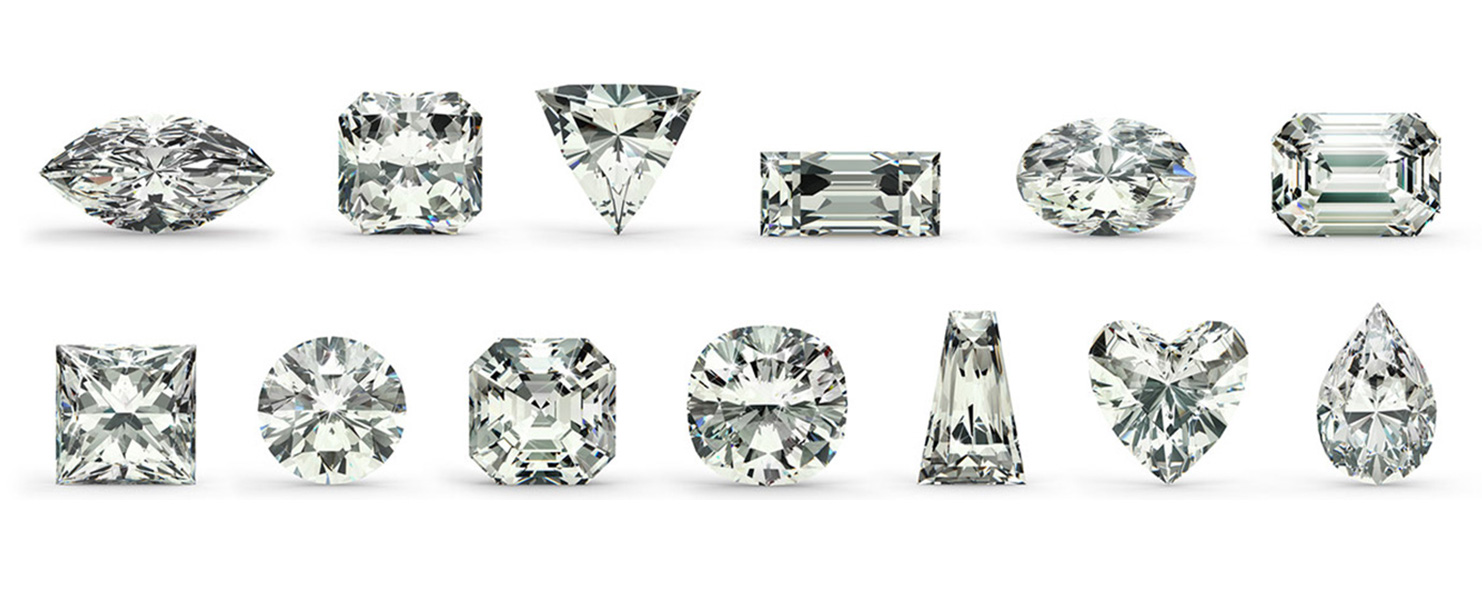
Different diamond shapes for engagement rings can reflect various aspects of a person's style, personality, and preferences. While these interpretations can be subjective and not applicable to everyone, here is a general overview of what some popular diamond shapes might suggest about a person:
- Round Brilliant: The most classic and popular diamond shape, round brilliant diamonds are often chosen by individuals who appreciate traditional values and timeless elegance. This shape might suggest a personality that values classic beauty and sophistication.
- Princess Cut: With its modern and angular look, the princess cut is often favoured by those who are trendy and fashion forward. It might indicate a bold and contemporary personality with a flair for the dramatic.
- Emerald Cut: The emerald cut, known for its elongated shape and step-cut facets, is often associated with an appreciation for vintage glamour and refined taste. It might suggest sophistication, elegance, and a love for understated luxury.
- Oval: Oval diamonds are unique and elegant, often chosen by individuals who appreciate uniqueness but with a nod to tradition. This shape might indicate a creative and individualistic personality with a blend of classic and modern tastes.
- Marquise: The marquise shape, with its pointed ends and elongated body, is distinctive and bold. It might suggest a personality that enjoys standing out and making a statement, with a taste for the unconventional.
- Pear: The pear shape, or teardrop, combines elements of the round and marquise cuts. It might indicate a personality that is adventurous and likes to blend tradition with a touch of uniqueness.
- Cushion: The cushion cut, with its soft corners and vintage feel, is often chosen by romantics who appreciate a blend of old-world charm and modern sensibilities. It might suggest warmth, affection, and a love for comfort and elegance.
- Asscher: Similar to the emerald cut but with a square shape, the Asscher cut is often associated with Art Deco style and might indicate a love for vintage, art, and history, as well as a keen eye for detail.
- Radiant: Radiant diamonds, known for their brilliance and vibrant cuts, are often chosen by those who appreciate a lively and energetic style. This shape might suggest a vivacious and dynamic personality.
- Heart: The heart shape is a symbol of love and is often chosen by romantics who wear their hearts on their sleeves. It might suggest a deeply sentimental and affectionate personality.
It's important to remember that these interpretations are generalisations and that the choice of a diamond shape is a highly personal decision. The most important aspect is that the chosen shape resonates with the individual's personal style and the meaning they attach to the ring. You can use our unique Design Your Own Ring tool to select the best shape for you.
4. Should I See The Diamond Certificate?
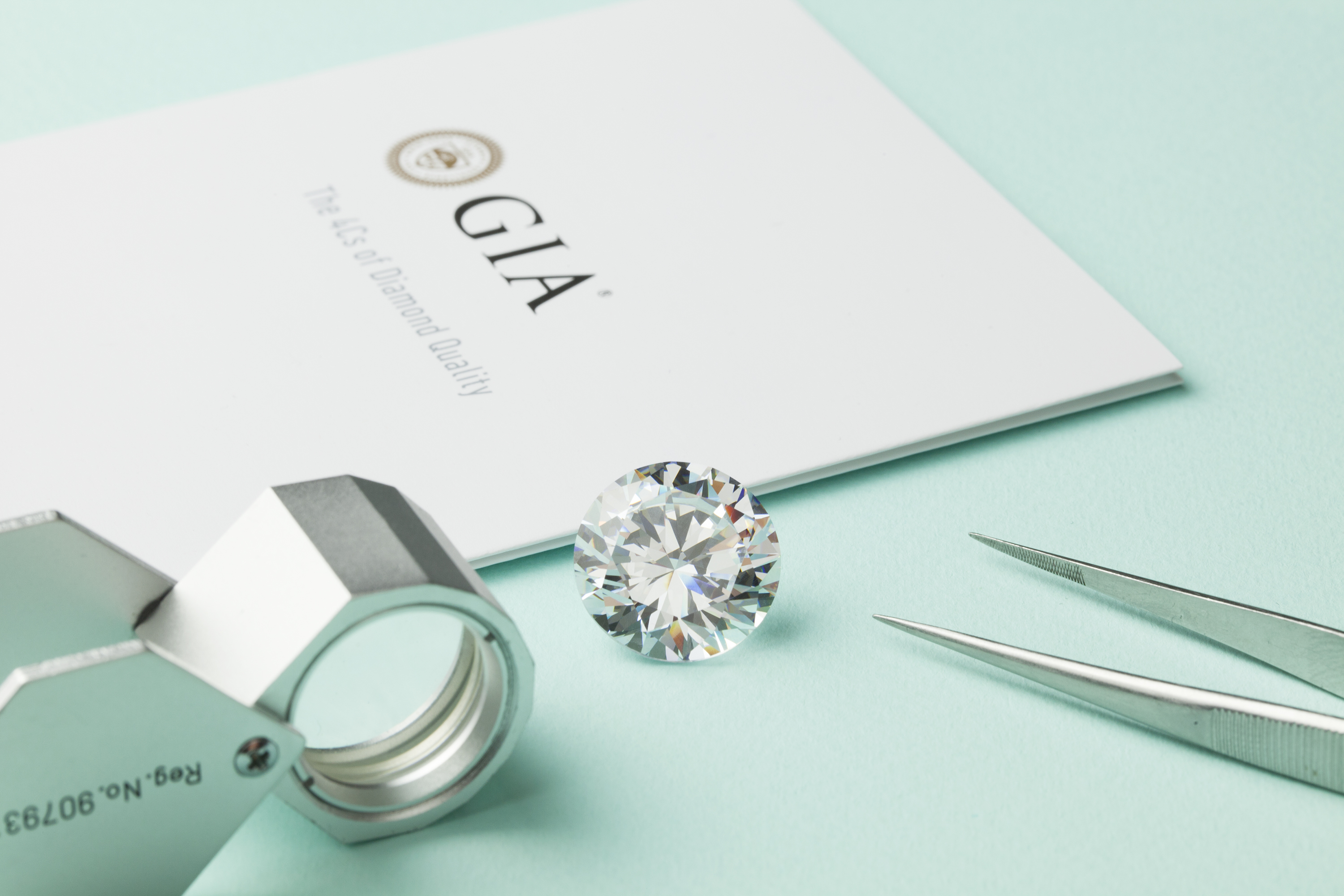
Yes, it is highly advisable to ask to see the diamond certificate when purchasing a diamond. A diamond certificate, also known as a diamond grading report, is a document created by a team of trained and experienced gemmologists. The diamond is evaluated, measured, and scrutinized using trained eyes, a jeweller's loupe, a microscope, and other industry tools.
A completed certificate includes an analysis of the diamond's dimensions, clarity, colour, polish, symmetry, and other characteristics. Here are a few key reasons why you should ask for the diamond certificate:
-
Verification of Quality: The certificate provides a professional, unbiased evaluation of the diamond's characteristics and quality. This helps ensure that you are getting what you are paying for. Typically, diamonds have the diamond grading report number laser inscribed on the girdle of the diamond for additional validation.
-
Comparison: With a certificate, you can compare diamonds more effectively. The grading gives you a clear, standardised way to compare the quality of different diamonds.
-
Insurance and Resale: For insurance purposes, a certificate provides detailed information about the diamond, which can be crucial in case of loss, theft, or damage. It also adds value and credibility if you ever decide to sell the diamond.
-
Consumer Confidence: Knowing that your diamond has been independently assessed by qualified professionals can give you peace of mind about your purchase.
-
Identification of Lab Grown or Treated Diamonds: The certificate should disclose if the diamond is natural or lab grown and if it has undergone any treatments. This information is crucial for both valuation and ethical considerations.
When you receive the certificate, make sure it is from a reputable gemmological laboratory such as GIA, IGI or HRD.
- Gemological Institute of America (GIA)
- International Gemological Institute (IGI)
- Diamond High Council (HRD)
These labs are well known worldwide and come with high reputations, with the GIA being the most popular and recognised. Each would provide an excellent certification.
Remember, the certificate is for the diamond only, not the ring or setting. If you are purchasing a ring, you might receive separate documentation for the setting's materials and craftsmanship.
5. Can the Ring Be Customised?
The simple answer is Yes!
Designing a Bespoke Engagement Ring is a lot more simple than you think with Diamond Rocks. Don't think that "bespoke" means expensive, this is a big misconception!
If you have an idea for a beautiful piece of jewellery, we can turn it into reality - we are here to help and it will be something your loved one will treasure forever.
Simply fill in the form below and we will be in touch to discuss this further. The prices are often lower than what you would pay in the high street.
6. What Ring Size Should I Get?
We often get a lot of questions about ring size and how to calculate it. You can read our ring size help article for more information on this.
The fastest way to get the size will be to get a free plastic ring sizer (as shown below) which we can send in the post. All you have to do is fill in the details in this form:
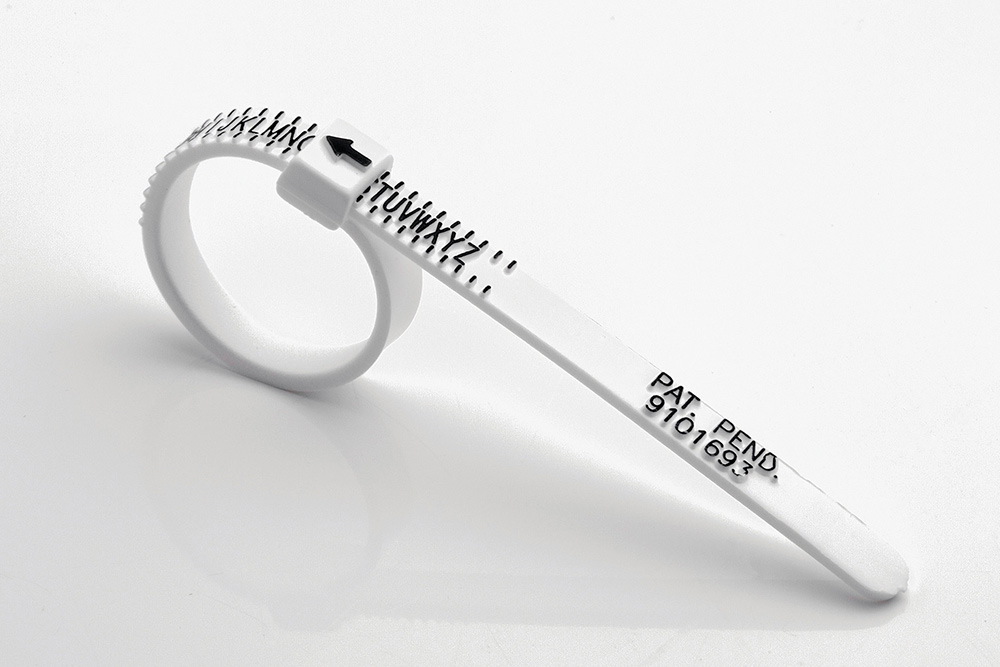
7. What Financing Options Are Available?
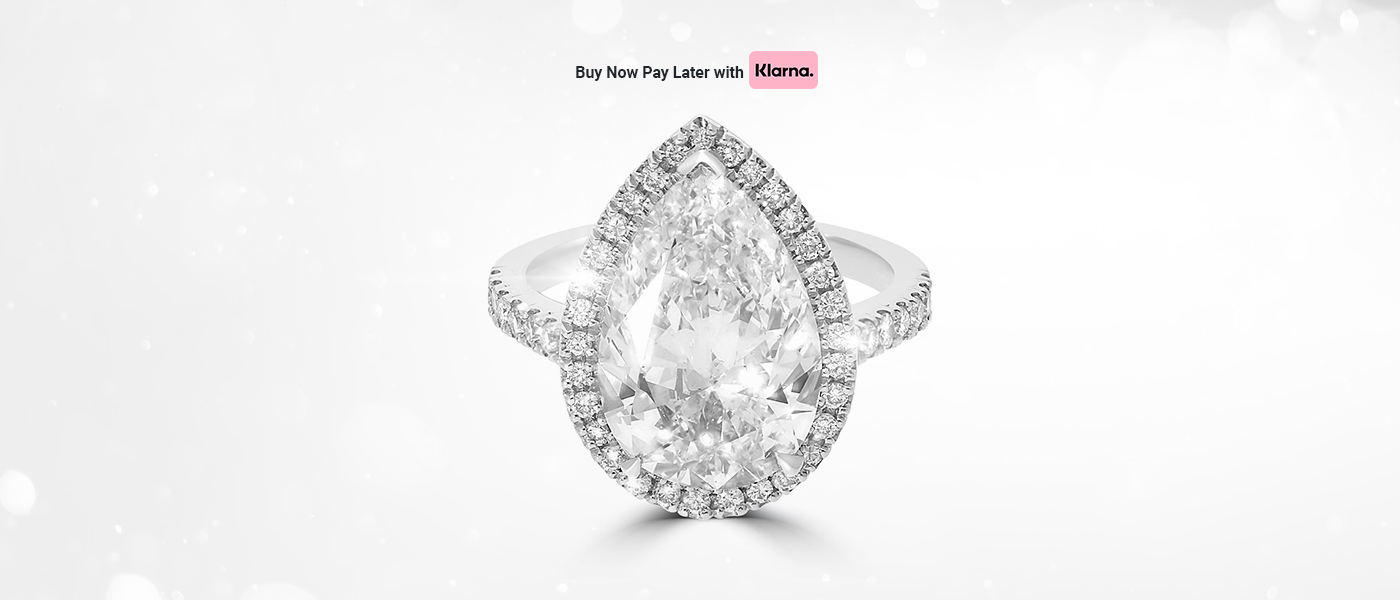
If you're unable to pay for the ring upfront, financing options are very useful to make the purchase more manageable. Finance for diamond jewellery is available with Diamond Rocks via Klarna for all purchases up to £5,000. We are happy to offer a variety of finance options to our customers with repayment terms from 6, 12, 24 & 36 months making it easier for customers to own diamond jewellery.
During the final stage of the checkout process, select the Klarna option and then you will be asked to complete a credit agreement.
You will be asked to pay a deposit and select from a payment plan that suits you from the following:
- 6 Months (0% APR)
- 12 Months (21.90% APR)
- 24 Months (21.90% APR)
- 36 Months (21.90% APR)
8. How Can I Ensure The Diamond is Ethically Sourced?
Ensuring that a diamond is ethically sourced is an important consideration for many buyers who want to make a responsible and conscientious purchase. Ethically sourced diamonds are mined and sold in ways that do not involve conflict, human rights abuses, child labour or environmental harm. Here are some steps to take to ensure a diamond is ethically sourced:
-
Research Reputable Jewellers: Look for jewellers who have a strong reputation for ethical practices. They should be transparent about where their diamonds come from and the steps they take to ensure ethical sourcing.
-
Ask for Certification: Inquire about the diamond's certification. Diamonds that are ethically sourced are often certified by organisations that monitor and enforce strict standards. The most notable is the Kimberley Process Certification Scheme (KPCS), which aims to prevent the flow of conflict diamonds. However, be aware that the Kimberley Process mainly addresses conflict diamonds and does not cover other ethical concerns like labour practices or environmental impact.
-
Consider Lab Grown Diamonds: Lab grown diamonds are an ethical and environmentally friendly alternative to mined diamonds. They have the same physical and chemical properties as natural diamonds but are created in controlled laboratory environments. The Pros and Cons of Lab Grown Diamond can be seen here.
-
Stay Informed: Keep yourself informed about the diamond industry and ongoing efforts to improve ethical sourcing. The diamond industry is dynamic, and standards and practices continue to evolve.
By taking these steps, you can make a more informed decision and contribute to the demand for ethically sourced diamonds, encouraging better practices within the industry.
9. Do I Need Insurance For The Engagement Ring?
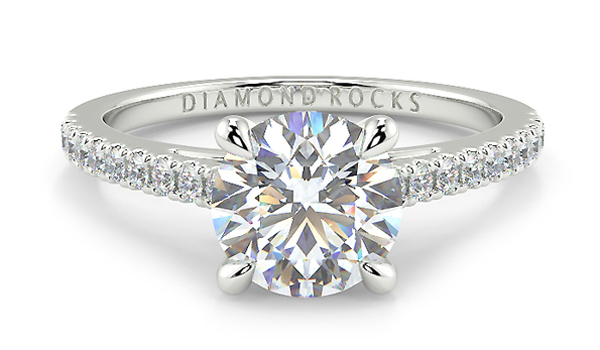
10. What Is The Maintenance Routine For The Ring?
Remember that buying an engagement ring is a significant decision, and it's essential to ask questions, do your research, and work with a reputable jeweller to find the perfect ring that symbolises your love and commitment.










